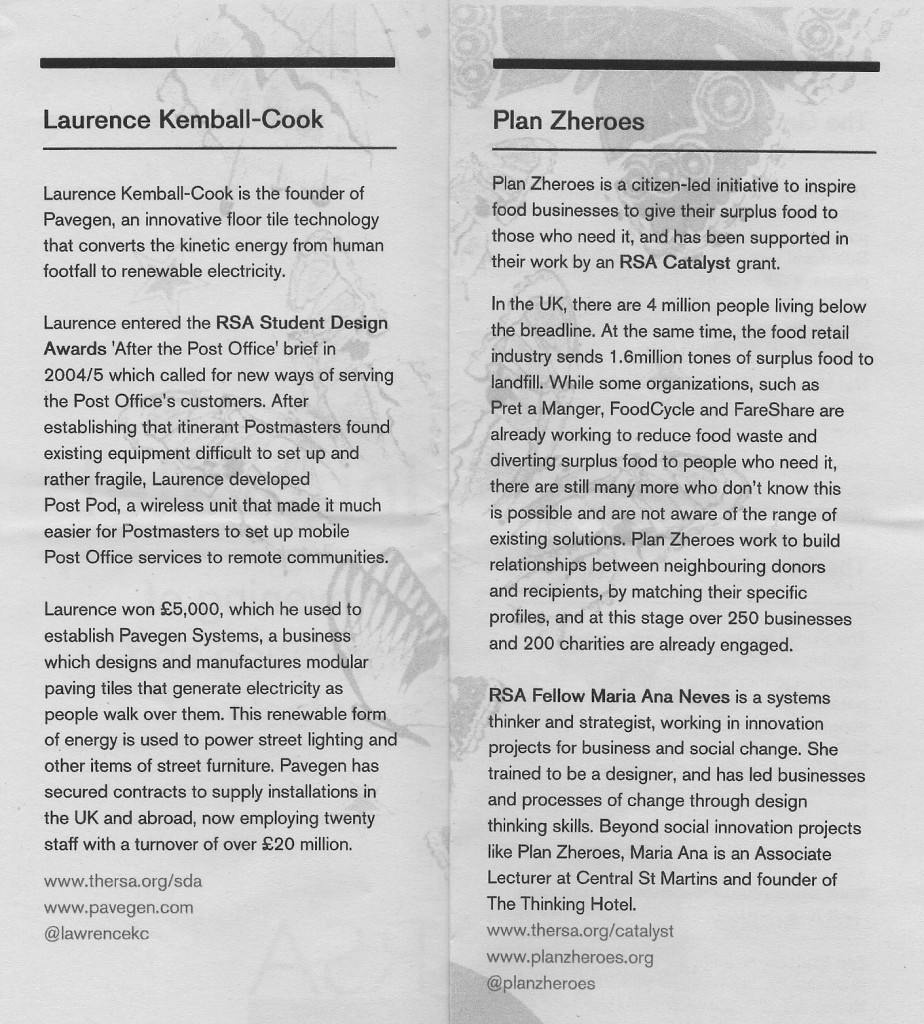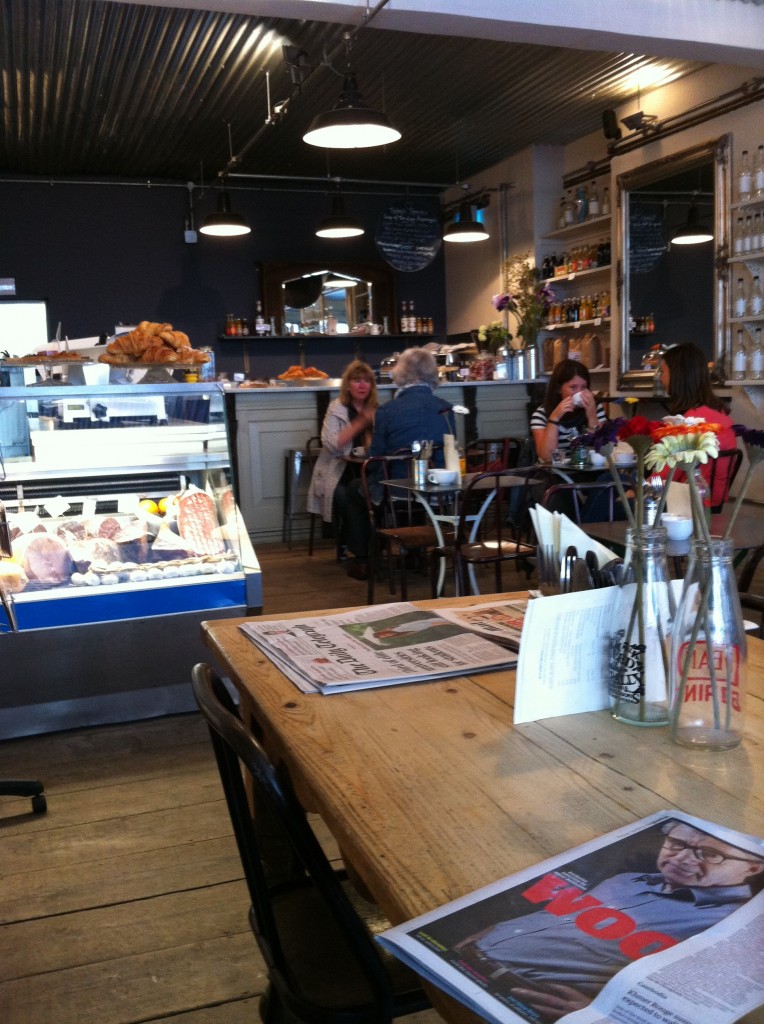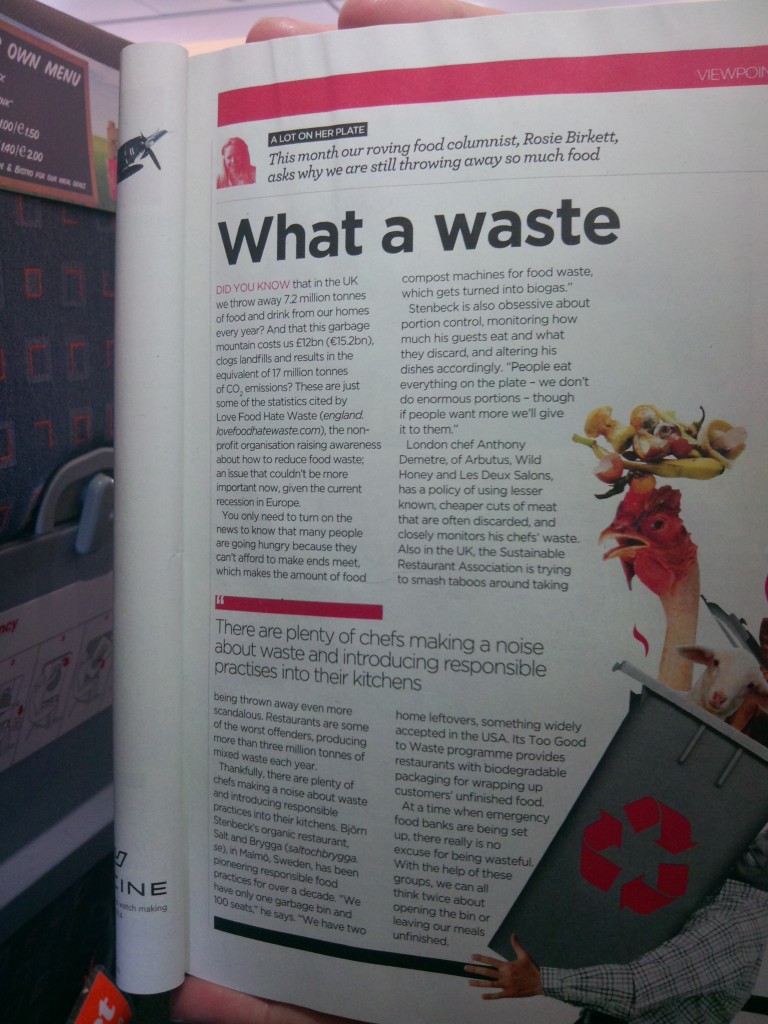Imagine a world in which the steps you take are harnessed as an energy source.
That is the premise behind pavegen ‘renewable energy from footsteps’ one of a number of Royal Society of Arts (RSA) supported projects on display at an open evening I was invited to last night.
I was there to visit the Plan Zheroes exhibit (another RSA supported project) ahead of the forthcoming Knowledge Cafe: making use of surplus food I am running in Lewes in 10 days time with Maria Ana Neves an RSA Fellow and Plan Zheroes founding member.
What struck me about pavegen was its simplicity and potential. In conversation I discovered it gives a 2 year payback based on a footfall of 250k ‘visits’ a day. That will generate enough energy to power lights and LED displays making it ideal for Shopping Malls and Railway Stations.
Why I am interested?
- A couple of years ago the golf club I’ve been chairman of took a very bold decision to invest in alternative energy sources and sunk a number of heat inducers into the overflow carpark. The electricity from that source actually powers the club including water, showers and heating and we put energy back into the grid!
- Portugal, my wife’s homeland has among the highest per capita energy costs in the world and recently sold off its national power company in an auction to meet the privatisation constraints imposed under the austerity plan of the Troika.
- Many countries (including Saudi Arabia which is setting up the King Abdullah City for Renewable Energy) are looking at ways of reducing their reliance on fossil fuels and generating energy from other sources.
For those of you who want to follow up, below is a snapshot of the promotional material






